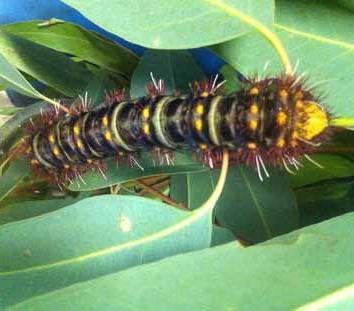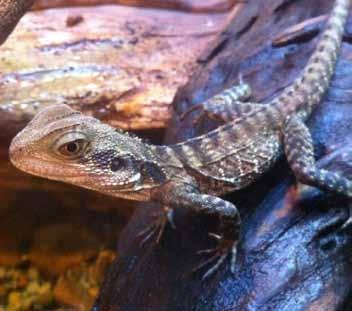
2 minute read
Xplanations Search > Discover
Send your query to the Search & Discover team, email sand@austmus.gov.au
search DIscoVeR


Q. That is the biggest caterpillar I have ever seen! What is it? The caterpillar of the White-stemmed Gum Moth, Chelepteryx collesi, can reach 12 centimetres in length, one of the largest in the world. Banded in grey and black with yellow spots, it is covered with tufts of reddish-brown spiky bristles. Also known as the Prickly Gum Moth, its bristles are easily dislodged, yet are strong enough to penetrate human skin and cause painful irritations. It’s a good idea not to handle the caterpillar or their shed skins. The camouflaged cocoon is hazardous too, with bristles in the tough silk walls able to cause irritation years after the caterpillar has pupated. The adult moths are sometimes mistaken for bats, with the female wingspan reaching 16 centimetres and the male only slightly smaller. But, lacking functional mouthparts, they live for just two or three days after emerging around May each year – just enough time to mate and lay their eggs.
lAuren McdonAld
the caterpillar of the White-stemmed Gum Moth is one very prickly customer. Photo by Melissa Murray. Q. What are these insects doing swarming in my garden? Many people contact us at this time of year about beetles swarming in gardens and around houses. The colourful, soft-bodied culprit is known as the Plague Soldier Beetle, Chauliognathus lugubris (family Cantharidae). The Plague Solider Beetle earned its common name not because it brings or spreads dangerous plagues, but because it forms huge swarms during mating season when vast numbers of beetles can appear on plants. The larval beetles live on the ground where they prey on other insects. The adults are omnivorous, feeding on both other insects and plants, and can release poisonous chemicals to deter predators when handled or threatened. But don’t be too concerned if you have a swarm in your garden: the beetles are more interested in mating than eating plants and will tend to disperse afterwards.
JAyMe-Ann deMeny
Plague soldier Beetles form huge swarms. Photo by Dave Britton. Q. I have found a lizard in my backyard that appears injured. Can I take care of it and keep it as a pet? Many native animals (including all reptiles) are protected in New South Wales, so it is illegal to remove a wild lizard from its habitat, even if the habitat is your backyard! You should contact a wildlife rescue group if the animal is injured or sick. Most wild animals do not adjust to captivity as well as captive-bred animals and so taking the animal out of the wild can often stress the injury further. Most vets will not charge you to treat wildlife in need and they can pass the injured animal on to a licensed carer. You can legally keep reptiles such as lizards by first obtaining a wildlife keeper’s licence and researching what the species needs.
chris hosKinG
WEBLINK
find out more about keeping reptiles as pets at australianmuseum.net.au/reptiles-as-pets
eastern Water Dragon, Intellagama lesueurii lesueurii. Photo by steve Vogel.

